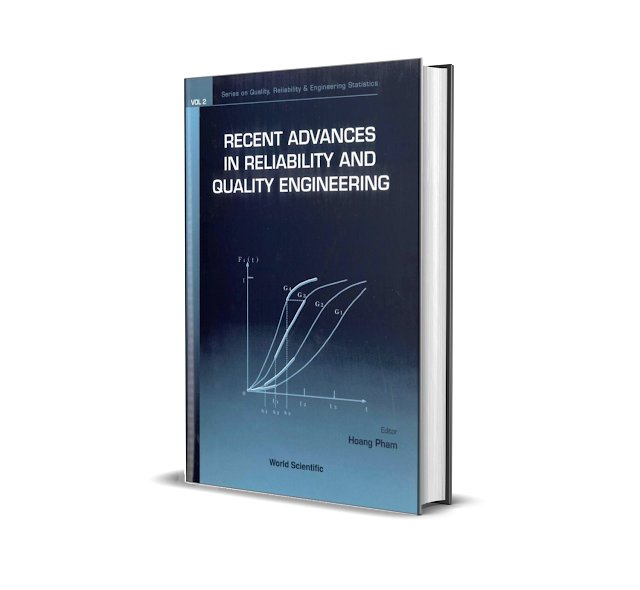Download Recent Advances in Reliability and Quality Engineering Easily In PDF Format For Free.
PREFACE:
Today's engineering systems have become increasingly complex to design and build while the demand for reliability, quality, and cost effective development continues. Reliability is one of the most important attributes in such critical systems as defense systems,0 aerospace applications, real-time control, medical applications, as well as commercial systems. Growing international competition has increased the need for all engineers and designers to ensure a level of quality and reliability of their products before release, and for all manufacturers and producers to produce products at their optimum reliability level at the lowest cost. Hence, the interest in reliability and quality has been growing in recent years.
This volume presents recent research in reliability and quality theory and its applications by many leading experts in the field. The subjects covered include reliability optimization, software reliability, maintenance, quality engineering, system reliability, Monte Carlo simulation, tolerance design optimization, manufacturing system estimation, neural network, software quality assessment, optimization design of life tests, software quality, reliability centered maintenance, multivariate control chart, methodology for the measurement of test effectiveness, imperfect preventive maintenance, Markovian reliability modeling, accelerated life testing, and system availability assessment. This volume will serve as a reference for postgraduate students and also prove useful for practicing engineers and researchers of reliability and quality engineering. The method proposed in Chapter 1 is devoted to the designing of control charts (mean, median, standard deviation, and range) for data having a symmetrical leptokurt c distribution. This method is based on the symmetrical Johnson Su distributions.
Since computers are being used increasingly to monitor and control both safetycritical and civilian systems, there is a great demand for high-quality software products. Reliability is also a primary concern for both software developers and software users [Pham et al. (1999)]. Chapter 2 describes an NHPP software reliability model that integrates testing coverage and imperfect debugging by incorporating fault introduction phenomenon into software fault detection rate function. The model is also illustrated by using two sets of data collected from real applications. In Chapter 3, a software system is viewed as a hierarchy of programming and integration modules. Each programming module can be developed in-house or purchased (when available). The reliability of software modules developed in-house and of software hierarchies as a function of their cost is presented. This chapter also includes branch and bound schemes to compute the optimal reliability where only easier continuous nonlinear problems are solved.
Successful testing of a one-shot device usually results in its destruction. This occurs quite often in the inspection of military weapons as well as industrial products. Chapter 4 discusses general test plans that satisfy both sample size and power requirements. An algorithm for generating these plans is also obtained. There are many situations that the process may be in control when the characteristics are considered separately but out of control when considered jointly with the multivariate control chart. In Chapter 5, multivariate control charts are discussed which are based on Hotelling's T 2 statistic. Chapter 6 presents the preparedness maintenance model for multi-unit systems with imperfect maintenance and economic dependence. The optimum opportunistic preparedness maintenance policies to optimize the system operating performance are then obtained.
Chapter 7 describes the use of Monte Carlo simulation to provide estimates of reliability functions for use in classical variational methods. The variational principle is derived from the forward and backward Kolmogorov equations. Chapter 7 also demonstrates a number of practical ways in which the efficiency of the simulation and variational processing procedure can be further improved. Chapter 8 presents a Bayesian approach to the periodic and the sequential imperfect preventive maintenance with minimal repair at failure. The optimal policies that minimize the expected cost rate under a Weibull hazard function are discussed. A case study of the K Steelworks is also presented to illustrate the results. Chapter 9 deals with life tests based on multi-stage decision making. The decision making of which action, namely accepting, rejecting or deferring to the next stage, is done at each stage. This chapter also deals with the multi-stage life test with step-stress life acceleration at each stage and presents a design procedure for the multi-stage accelerated life test using the cumulative exposure model.
Reliability centered maintenance (RCM) is a systematic process for preserving a system's function by selecting and applying effective maintenance tasks. Chapter 10 reports an application of RCM techniques to enhance the maintenance efficiency and effectiveness of light rail vehicle equipment at the Light Rail Division of KowloonCanton Railway Corporation. An RCM team was set up during the implementation of RCM to rethink and redesign maintenance procedures. For robust tolerance design, tightening systems' variations can lead to better customer satisfaction but it may result in a higher cost to the manufacturer. The focus of environmental protection concern is now shifting to pollution prevention, from documentation of pollutant patterns and identification of remediation technology. Chapter 11 presents a tolerance design optimization model incorporating environmental concepts. The model can be used to minimize the total societal loss, including a loss to the environment, by selecting the best level settings of the tolerance limits.









Comments
Post a Comment